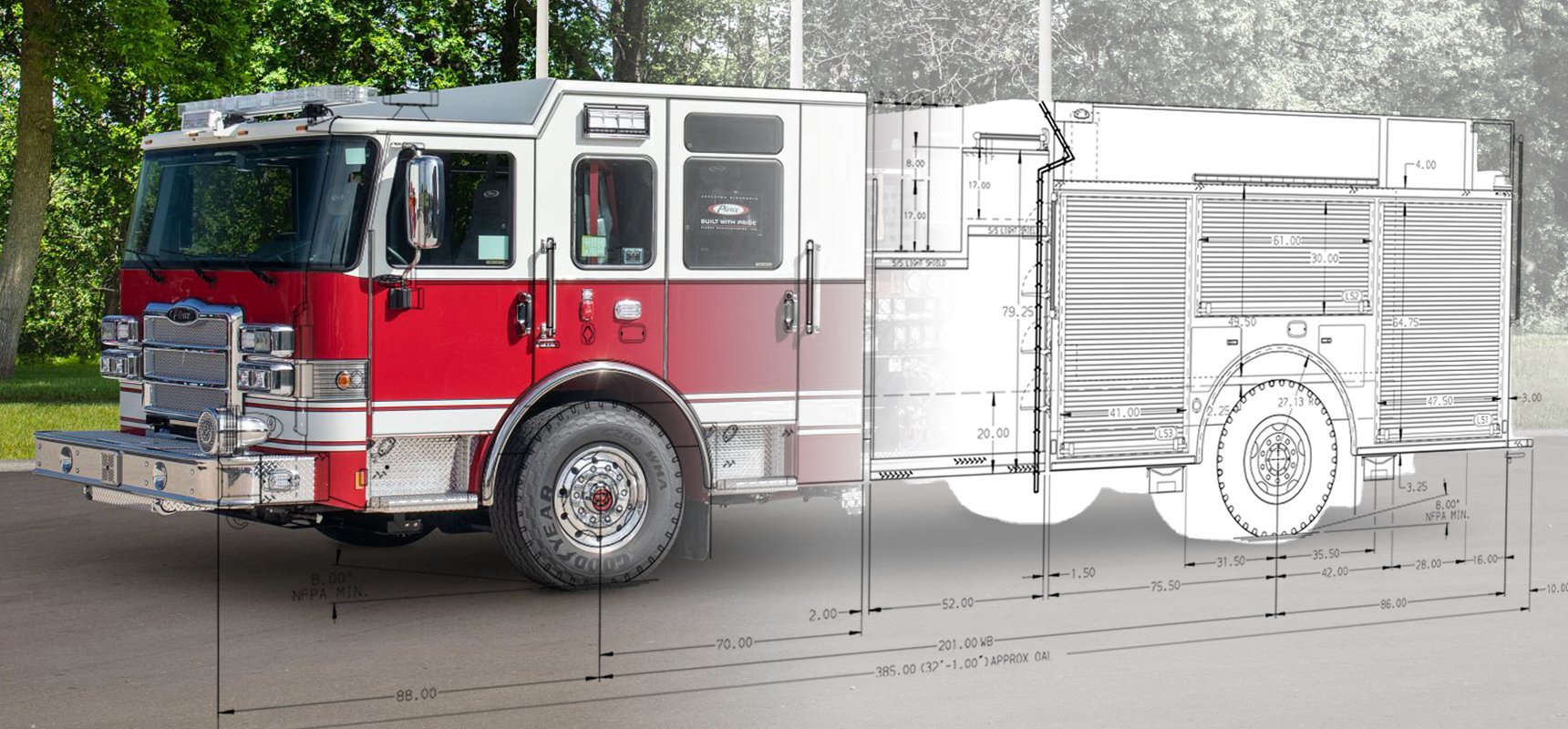To make a fire pit screen, start by measuring and cutting the decking, then glue the boards together and cut the cover before installing it securely. Choosing high-quality materials like steel or aluminum ensures safety and proper containment of sparks while allowing air circulation.
Always consider local laws requiring a fire pit screen for added safety, even if not mandatory. Opting for a fabric cover is a practical and cost-effective solution, offering lightweight and easy to store convenience compared to solid metal covers. Additionally, following proper maintenance guidelines, such as not using the screen over active fire, will help extend its lifespan for maximum durability.

Credit: www.piercemfg.com

Choosing The Right Materials
Choosing the Right Materials:
High-quality Material Options
Steel: Durable and reliable for fire pit screens.
Aluminum: Lightweight yet sturdy, a good alternative to steel.
Importance Of Design
Contain Sparks: A well-designed screen ensures spark containment.
Allow Air Circulation: Proper design enables air circulation while maintaining safety.
Best Materials: Look for quality steel or aluminum for a safe and secure fire pit screen.
Local Regulations: Some areas mandate the use of fire pit screens for safety and compliance.
Practical Covers: Fabric covers are common, cost-effective, and easy to store.
DIY: Create a metal fire pit cover with simple steps for added protection.

Credit: www.homedepot.com
Building Your Fire Pit Screen
Measurement And Cutting
When building your fire pit screen, start with accurate measurements and precise cutting. Ensure the screen fits securely.
Assembly And Installation
Next, assemble the components according to the design. Install the fire pit screen securely to prevent accidents.
Key Points:
- Measure the dimensions of your fire pit accurately.
- Cut the screening material with precision to fit the measurements.
- Use a suitable frame to assemble the screen securely.
- Install the completed fire pit screen over the fire pit safely.
Choose materials like steel or aluminum for durability and safety. Circulate air effectively while containing sparks!
Safety And Legal Considerations
When creating a fire pit screen, it is crucial to consider safety and legal aspects. Understanding the local regulations and addressing safety concerns are essential in ensuring a secure and compliant fire pit setup.
Local Regulations
Before embarking on building a fire pit screen, it is vital to check local regulations and ordinances regarding fire pit usage. This includes understanding any specific requirements or restrictions related to spark containment and fire safety measures. Local authorities may have guidelines on distance from structures, fire size, and the necessity of a fire pit screen to prevent flying embers.
Safety Concerns
Safety should be the top priority when constructing a fire pit screen. It is essential to consider factors such as the materials used, adequate ventilation, and the structural integrity of the screen to prevent accidental fires and ensure the protection of individuals nearby. Emphasizing safety measures can minimize the risk of potential hazards and create a secure environment for enjoying a fire pit.
Credit: blog.hootsuite.com
Alternative Cover Options
Looking to make a fire pit screen for safety? Explore alternative cover options like stainless steel or fabric covers to contain sparks and prevent accidents. Ensure your outdoor fire pit is safe and secure with high-quality materials and designs that allow for proper air circulation.
Fabric Covers
One of the most popular and practical options for covering a fire pit is a fabric cover. Fabric covers are lightweight, easy to store, and cost-effective. They provide protection from the elements and help to keep your fire pit clean and dry.
Fabric fire pit covers are typically made from weather-resistant outdoor materials, such as polyester blends or vinyl. These materials are designed to withstand the harsh outdoor conditions and are resistant to fading, tearing, and water damage.
In addition to their durability, fabric covers are also available in a variety of colors and styles, allowing you to customize the look of your fire pit and complement your outdoor decor. Whether you prefer a sleek and modern design or a more rustic and natural look, there is a fabric cover to suit your taste.
Diy Metal Cover
If you’re looking for a more sturdy and long-lasting option, a DIY metal cover may be the perfect choice. Metal covers are typically made from steel or aluminum, which provides excellent durability and protection for your fire pit.
To make a DIY metal cover, you’ll need to measure the dimensions of your fire pit and cut the metal to fit. You can use a variety of tools to cut the metal, such as a saw or shears, depending on the thickness and type of metal you’re using.
Once you have the metal cut to size, you’ll need to attach hinges or handles to make it easy to lift and remove the cover. You can also add a handle or knob for added convenience.
When it comes to finishing touches, you can choose to paint the metal cover to match your outdoor decor or leave it bare for a more industrial look. Either way, a DIY metal cover is a great option for those who want a durable and custom-made solution for their fire pit.
In conclusion, whether you prefer the lightweight and cost-effective option of a fabric cover or the sturdiness and customization of a DIY metal cover, there are plenty of alternative options to choose from when it comes to covering your fire pit. Consider your specific needs and preferences, and select the option that best fits your style and budget.
Maintaining And Extending The Lifespan
Once you have successfully built your own fire pit screen, it is important to know how to maintain it properly to ensure its longevity. With proper care and regular maintenance, you can extend the lifespan of your fire pit screen and continue to enjoy safe and cozy fires in your backyard. In this section, we will discuss the best practices for use, as well as patching and repairing techniques to keep your fire pit screen in excellent condition.
Best Practices For Use
- Always ensure that your fire pit screen is securely placed on top of the fire pit to prevent sparks, embers, and ash from escaping.
- Before starting a fire, make sure the screen is clean and free from any debris that could potentially ignite.
- Keep a safe distance between the fire pit screen and any flammable objects or structures to prevent accidents.
- Regularly inspect the screen for any signs of wear or damage, such as rust or holes, and address them promptly to maintain its effectiveness.
- When not in use, store the fire pit screen in a dry and covered area to protect it from the elements.
Patching And Repairing
Over time, your fire pit screen may require patching or repairing to fix small damages. Here are some simple steps to help you with this process:
- Clean the damaged area thoroughly to remove any dirt, debris, or rust.
- Using a wire brush, gently scrub the damaged area to remove any loose particles.
- If there are any small holes or tears, you can patch them using a high-temperature-rated adhesive or fire-retardant tape. Make sure to follow the manufacturer’s instructions for proper application.
- If the damage is more significant, you may need to replace the affected section of the screen. Measure the dimensions of the damaged area and cut a piece of compatible wire mesh to fit. Attach the new section securely using wire or metal fasteners.
- After repairing or patching, inspect the entire fire pit screen again to ensure there are no other areas in need of attention.
By following these maintenance practices and promptly addressing any damages, you can significantly extend the lifespan of your DIY fire pit screen. Remember, safety should always be the top priority when using a fire pit, so regularly inspecting and maintaining your screen is essential. With proper care, your fire pit screen will continue to provide protection and enjoyment for many memorable gatherings around the fire.
Frequently Asked Questions For How To Make A Fire Pit Screen
What Is The Best Material For A Fire Pit Screen?
For a fire pit screen, opt for high-quality steel or aluminum with a design that contains sparks and allows airflow.
Does A Fire Pit Need A Screen?
Yes, a fire pit needs a screen to contain sparks, embers, and ash for safety and compliance with local regulations.
What Is The Best Way To Cover A Fire Pit?
The best way to cover a fire pit is with a fabric cover. It’s practical, cost-effective, lightweight, and easy to store. Fabric covers are made from durable, weather-resistant materials like polyester blends or vinyl. They help protect the fire pit from the elements and are cheaper than solid metal covers.
How Do You Make A Metal Fire Pit Cover?
To make a metal fire pit cover, start by covering the entire pit with a piece of metal. Then, cut slits or drill holes in the metal to allow airflow. Ensure the cover fits securely on top of the fire pit.
This DIY approach provides protection from sparks, embers, and ash.
Q: What Are The Best Materials For A Fire Pit Screen?
A: Look for high-quality materials like steel or aluminum and consider the design to ensure sparks are contained while air still circulates.
Conclusion
In creating a fire pit screen, it’s essential to prioritize safety and functionality. Whether you’re following a DIY approach or selecting a pre-made option, ensuring that it effectively contains sparks and embers is crucial. By considering high-quality materials and suitable designs, you can enjoy your outdoor fire pit experience securely and with peace of mind.